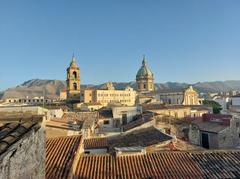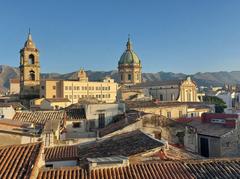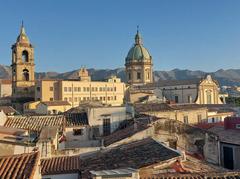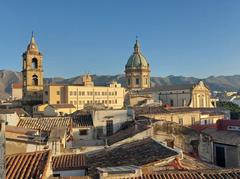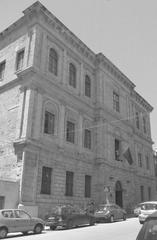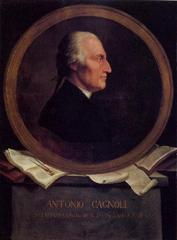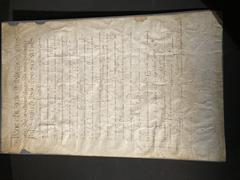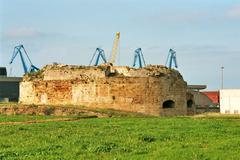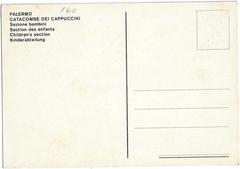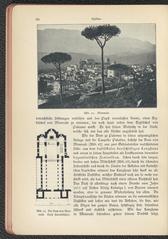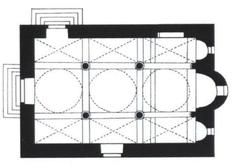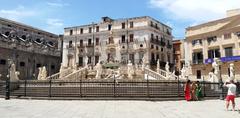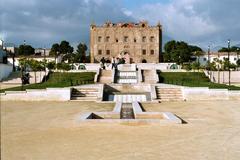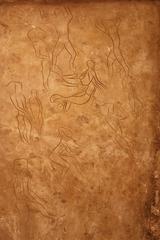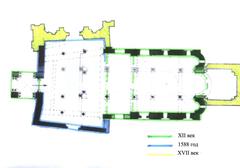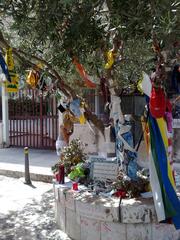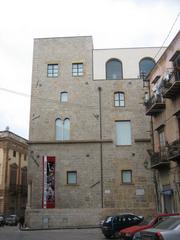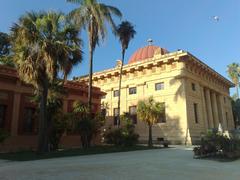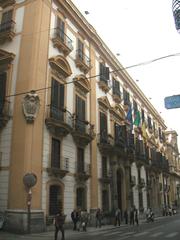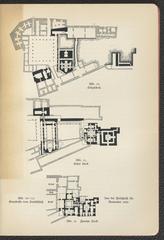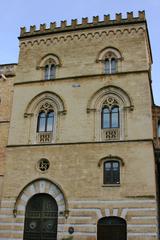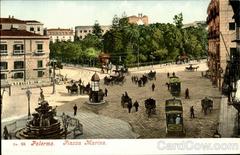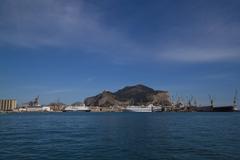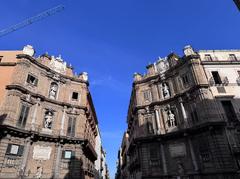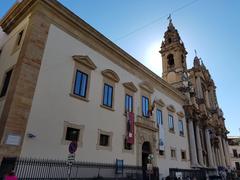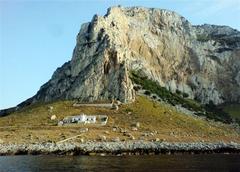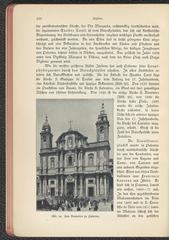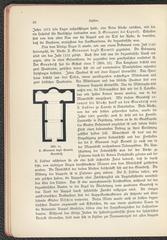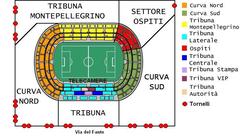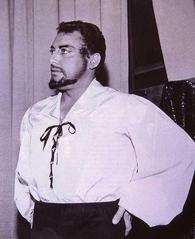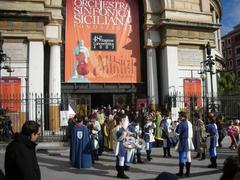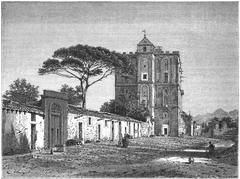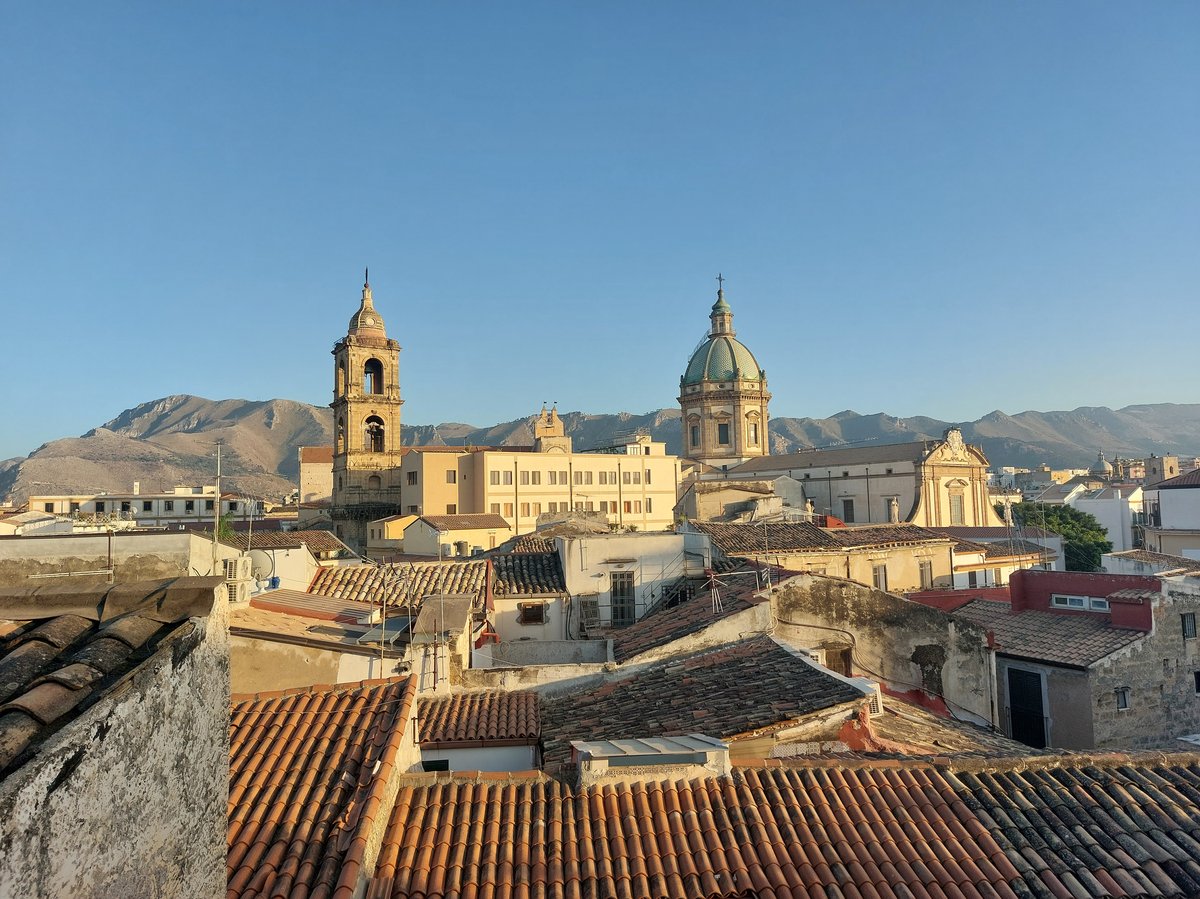
Church of the Gesù Palermo: Visiting Hours, Tickets, and Historical Significance
Date: 14/06/2025
Introduction
Nestled in the vibrant heart of Palermo, the Church of the Gesù—also known as Casa Professa—is a pinnacle of Sicilian Baroque artistry and a testament to the enduring legacy of the Jesuit order. As a focal point of religious, artistic, and cultural life in Sicily, this church draws visitors from around the world to admire its opulent interiors, rich history, and central role in the spiritual and civic life of Palermo. This comprehensive guide will provide detailed information about the church’s history, architectural highlights, practical visitor advice—including hours and ticketing—and recommendations for making the most of your visit. (Summer in Italy; PalermoViva; Sicily.co.uk; Liturgical Arts Journal)
Historical Overview
Early Foundations and Jesuit Arrival
The origins of the Church of the Gesù trace back to a site with deep religious roots, first housing the Basilian church of Santa Maria della Grotta (established in 884 CE) within a grotto. Over centuries, the location reflected the rich confluence of Byzantine, Arab, and Norman influences in Sicily, including the addition of the Sant’Anna Chapel during the Norman era. The arrival of the Jesuits in 1549 marked a decisive transformation; by 1553, the order received the site from Emperor Charles V, affirming its status through Sicilian parliamentary recognition. Under the guidance of architect Giovanni Tristano, the Jesuits began construction of a Renaissance-style church in 1564, with the first phase completed in 1577. (Spotting History; PalermoViva; Wikipedia)
Baroque Flourishing and Artistic Evolution
Between the 17th and 18th centuries, the church underwent a dramatic transformation under Natale Masuccio, embracing the Baroque aesthetic. The expansion included new side naves, a soaring dome (completed in 1686), and an interior resplendent with marble inlays, stuccoes by the Serpotta family, and vibrant frescoes. This period marked the church’s emergence as a leading example of Sicilian Baroque, characterized by theatricality, dynamic forms, and evocative use of light and color. (World of Interiors; Wonders of Sicily)
Role in Society and Heritage Recognition
More than a place of worship, the Church of the Gesù became a center of Jesuit education, charity, and cultural life, housing a college and monastic facilities. Its architectural and artistic standards influenced ecclesiastical building across the island. In 1888, the church was declared a national monument, reflecting its significance in Italy’s heritage. (Wikipedia; PalermoViva)
Wartime Damage and Modern Restoration
World War II inflicted severe damage on the church, with the 1943 bombing destroying the dome and precious frescoes. Decades of meticulous restoration ensued, culminating in the church’s full reopening in 2009. These efforts have preserved its status as a living monument, balancing its liturgical function with cultural tourism. (UNESCO)
Architectural and Artistic Highlights
Façade and Structure
The church’s relatively austere façade belies the splendor within. Statues of St. Ignatius of Loyola, the Madonna and Child, and St. Francis Xavier adorn the entrance, crowned by the Jesuit IHS emblem. The Latin cross layout features a central nave, flanked by side chapels and a dramatic transept, with the dome rising over the crossing. (Visit Sicily)
Interior Decoration
Marble Inlay (“Marmi Mischi”)
The interiors showcase dazzling polychrome marble inlays covering walls, pilasters, and chapels—a hallmark of Sicilian Baroque. The intricate patterns incorporate colored marble, semi-precious stones, and mother-of-pearl, culminating in elaborate floral and geometric motifs. (Best of Sicily)
Stuccoes and Frescoes
The Serpotta family’s stucco work animates the church with expressive angels, saints, and biblical scenes, blending seamlessly with the marble. Gioacchino Martorana’s frescoes, including the “Triumph of the Name of Jesus” on the nave ceiling, contribute to the immersive, heavenly atmosphere.
Altars, Chapels, and Sculptures
The high altar, constructed of polychrome marble and gilded bronze, centers attention on the Eucharist, in line with Jesuit liturgical principles. Side chapels, often sponsored by noble families, feature unique marble and stucco decorations. Statues by the Serpotta workshop further enhance the sense of movement and drama. (Italy Magazine)
Light and Space
Natural light streams through the dome and clerestory, illuminating the colorful interior and accentuating the interplay of marble, stucco, and fresco. The effect is most enchanting in the late afternoon, when sunlight filters through stained glass, casting vibrant hues across the nave.
Visiting the Church of the Gesù: Practical Information
Location and Access
- Address: Piazza Casa Professa, 21, 90134 Palermo PA, Italy
- How to Get There: A short walk from Quattro Canti, near Ballarò Market, and accessible by bus or taxi. Google Maps - Church of the Gesù Palermo
Visiting Hours and Tickets
- Standard Hours: Monday to Saturday, 9:30 am–1:00 pm and 4:00 pm–6:00 pm. Sunday hours may be limited or reserved for services.
- Admission: Tickets typically cost €2–€3, with discounts for students, seniors, and groups. Children under a certain age may enter free.
- Guided Tours: Offered occasionally in Italian and, upon request, in English or other languages. Booking in advance is recommended for groups or guided experiences.
- Accessibility: The main areas are accessible via ramps, though some chapels and the sacristy may pose challenges due to uneven floors and narrow passages. Assistance is available upon request.
Facilities
- Restrooms: Limited inside; nearby cafes and the Ballarò Market offer public facilities.
- Cloakroom: Not provided—travel light.
- Shops: Souvenirs, postcards, and religious items are available at nearby kiosks.
Dress Code and Etiquette
- Modest attire is required: shoulders and knees should be covered.
- Maintain silence and refrain from using flash photography.
- Photography is generally prohibited inside the nave and chapels.
Recommendations and Tips
- Best Times to Visit: Early morning or late afternoon for a quieter experience and optimal interior lighting.
- Combine with Nearby Sites: Explore Quattro Canti, Palermo Cathedral, and the bustling Ballarò Market.
- Special Events: Check for concerts or festivals, as the church occasionally hosts cultural events.
- Stay Hydrated: Palermo can be hot; bring water, but no food or drink inside.
- Language: Most signage is in Italian—consider bringing a translation app.
Frequently Asked Questions (FAQ)
Q: What are the Church of the Gesù visiting hours?
A: Monday to Saturday, 9:30 am–1:00 pm and 4:00 pm–6:00 pm. Sunday hours may be limited.
Q: How much do tickets cost?
A: Generally €2–€3, with discounts for students, seniors, and groups.
Q: Is photography allowed inside?
A: Photography is generally prohibited inside the nave and chapels to protect the artwork.
Q: Is the church accessible for visitors with disabilities?
A: Main areas are accessible via ramps, but some sections may have limited access.
Q: Are guided tours available?
A: Yes, often in Italian and occasionally in English; advance booking is recommended.
Summary and Final Recommendations
The Church of the Gesù is a jewel among Palermo’s historical and artistic treasures, showcasing the heights of Baroque artistry and the Jesuit legacy in Sicily. Its meticulously restored interiors, lively chapels, and remarkable use of marble and stucco make it essential for art lovers and cultural explorers. With clear visiting hours, affordable tickets, and central location, it is accessible to a wide range of visitors. For the most rewarding experience, plan your visit during quieter hours, dress respectfully, and consider joining a guided tour.
For the latest information on opening times, ticketing, and events, consult the Church of the Gesù Palermo official page or Palermo tourism website. Enhance your journey by exploring related articles on Palermo’s Baroque architecture and other historical sites.
